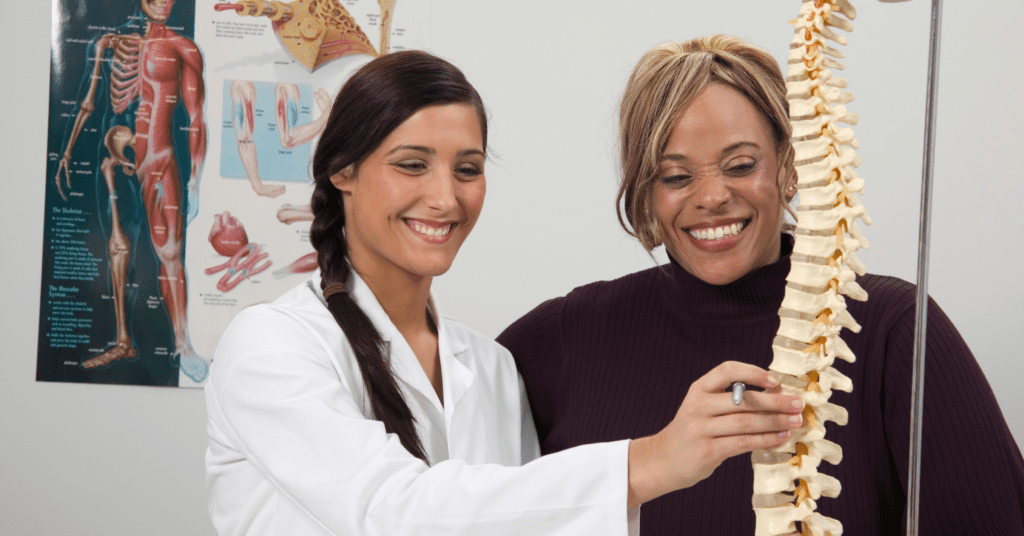Treating Gait-Related Back Pain in Burnaby, BC


Lower back pain is a prevalent health concern that impacts millions of individuals worldwide, and it could be linked to something as simple as the way we walk. Our walking patterns, also known as our gait, can directly influence our posture and spinal health. This article will dive deep into the relationship between gait, posture, and lower back pain, and explore how chiropractic care can be a game-changer in managing these issues.
Understanding Abnormal Gait and Its Link to Lower Back Pain
An abnormal gait refers to alteration in walking patterns that could be a result of numerous factors, such as muscle imbalances, joint problems, neurological conditions, foot problems, or spinal issues.
Muscle Imbalances and Lower Back Pain
Weak or tight muscles can disrupt the even distribution of forces when walking, leading to changes in gait and potentially contributing to lower back pain.
Joint Problems and Gait
Joint issues, whether due to injury or conditions like osteoarthritis, can throw off the smooth movement of your lower limbs, which can then affect your gait and subsequently your lower back.
Neurological Conditions and Gait
Conditions that impact the nervous system, like stroke, Parkinson’s, or peripheral neuropathy, can affect your coordination and balance, leading to an abnormal gait, translating further into lower back pain. Conditions such as sciatica also relate to abnormal gait and posture issues, and understanding chiropractic care for sciatica provides insights into comprehensive treatment options available.
Foot Problems and Their Impact on Gait
Issues like flat feet, high arches, or even inappropriate footwear can alter the mechanics of walking, potentially causing an abnormal gait.
Spinal Issues and Gait
Spinal problems, such as herniated discs or vertebral misalignment, can have a significant impact on gait, which can potentially contribute to lower back pain.
Role of Chiropractic Care in Improving Walking Patterns and Reducing Back Pain
Chiropractic care, with its focus on diagnosing and treating mechanical disorders of the musculoskeletal system, especially the spine, can offer a potential solution for abnormal gait. By performing spinal adjustments, chiropractors aim to restore proper alignment of the vertebrae, which can improve joint mobility, reduce pain, and greatly influence overall posture and gait.
In addition to spinal adjustments, chiropractors may use techniques like joint mobilization and soft tissue therapies to address muscle imbalances and tension, further improving overall muscle function and contributing to a more balanced walking pattern.
Chiropractic Techniques to Rectify Gait and Posture Issues

When it comes to rectifying gait and posture issues, chiropractors employ a variety of techniques:
- Spinal adjustments: These aim to restore proper alignment in the spine, impacting overall posture and joint mobility.
- Joint Mobilization: Enhancing the range of motion in joints can result in better movement patterns and reduction of stress on surrounding tissues.
- Soft tissue techniques: Chiropractors utilize therapies like massage and trigger point therapy to address muscle tension and imbalances.
- Postural education: Chiropractors provide advice on maintaining a proper posture during daily activities, including walking.
- Exercise recommendations: Chiropractors often prescribe exercises to strengthen specific muscles, improve flexibility, and enhance stability.
For those interested in a broader perspective on how chiropractic care contributes to overall wellness, this guide offers a comprehensive look at the benefits beyond gait and posture correction.
Assessing Gait and Posture Issues: What Does the Process Involve?
Identifying problems with gait and posture involves a comprehensive assessment process, which may include a clinical examination, observational analysis, and the use of specialized tools. The key components of this process include taking a medical history, carrying out a symptom assessment, observational analysis, gait analysis, functional movement assessment, range of motion testing, muscle strength, and imbalance assessment, along with a neurological examination.
Chiropractic Adjustments: A Long-term Solution and Prevention Strategy for Lower Back Pain?


How individuals respond to chiropractic care can greatly vary. However, there’s evidence to suggest that chiropractic adjustments could potentially provide a long-term solution, especially when part of comprehensive treatment plans. Chiropractors also play a role in patient education, providing people with knowledge and strategies for better self-care and preventing future issues.
Complementary Exercises and Habits for Chiropractic Treatment
The benefits of chiropractic treatment can be amplified by pairing it with specific exercises and healthy habits. Core strengthening, hamstring and hip flexor stretches, lumbar rotation exercises, maintaining good posture, staying active, ensuring an ergonomic workspace, proper footwear, taking regular breaks, and staying hydrated are all part of a holistic approach to improving gait and reducing lower back pain. While discussing the role of chiropractic care in managing gait-related issues, it’s also beneficial to integrate specific stretches to enhance outcomes. These stretches can further alleviate lower back pain and complement chiropractic treatments.
In addition to chiropractic adjustments, incorporating regular exercise into your routine is crucial. Learn more about exercises for back pain relief that can be particularly effective.
Conclusion
In Burnaby, chiropractic strategies play a crucial role in diagnosing and treating abnormal gait issues that contribute to lower back pain. Local chiropractors are well-versed in the community’s unique health needs, providing tailored care that makes a significant difference. By combining spinal adjustments, joint mobilization, and soft tissue techniques, chiropractors can provide a comprehensive approach to improve walking patterns and posture. To further understand how gait and posture contribute to back pain, it’s useful to explore common causes of back pain, which highlights various factors influencing spinal health. Remember, every individual is unique, so what works for one person may not work for others. Therefore, it’s important to consult with professionals to develop a treatment plan that best suits you.


If you’re experiencing gait-related back pain or have any concerns about your spinal health and posture, don’t wait to seek professional help. Our dedicated team at Metrotown Chiropractic is here to assist you with personalized chiropractic care tailored to your unique needs. Discover more about our chiropractor services in Burnaby and take the first step towards improved mobility and pain relief. Schedule your appointment today and start your journey to a healthier, more comfortable life.


